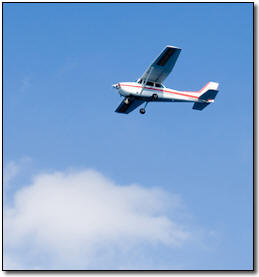Subscriber question:
"Descending from cruise altitude to pattern altitude. What is best for safety, performance, controllers, etc?" - Gregory M.
Wally:
“There are a multitude of factors that will influence your descent procedures for a given airport. Some of them are passenger comfort, icing, turbulence and engine considerations.
 Naturally if you have smooth air it is possible to gain some of the time you lost in the climb by pushing the nose over and only slightly reducing the power, just be sure you don’t exceed any POH limitations. If I can do this, I like to descend about 500 feet per minute.
Naturally if you have smooth air it is possible to gain some of the time you lost in the climb by pushing the nose over and only slightly reducing the power, just be sure you don’t exceed any POH limitations. If I can do this, I like to descend about 500 feet per minute.
Another major consideration in unpressurized airplanes is passenger comfort. High descent rates may cause ear blocks and sinus problems. So again, 500 FPM or less can help here as well. Sometimes it is good to level off in mid-descent to let the ears catch up.
On the other hand, if there is considerable turbulence at the lower altitudes you may want to stay above the turbulence until you are closer to your destination.
Naturally if you are IFR, you need to comply with the altitudes assigned by ATC but don’t be bashful about asking for what you need. If I have to make a low IFR approach, I want to be down to final fix crossing altitude and stabilized at least 2 miles before the final fix.
If you are VFR, you can pretty much do what you want about altitudes. In that case, I plan to arrive at pattern altitude just prior to entering the pattern.
One caution: never enter the pattern high and descend in the pattern. This could set you up to descend upon another aircraft. If you find yourself high approaching the pattern, move away and complete your descent and enter the pattern at pattern altitude. Also, there is no need to get down to pattern altitude a long way out as you are limiting your options in case of engine problems.
My goal is to plan my descent to keep my passengers as comfortable as possible within the limitations of ATC and the POH.
